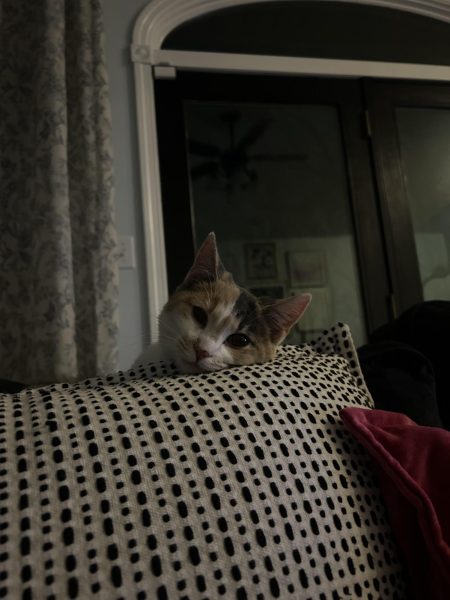The Secret History of…Dark Academia
May 17, 2022
The low-lit dorm held a burnt-out student, struggling to keep up with the hordes of literature that she was required to read. Half required by their professors and half needed for the secret “societies” she so desperately wished to be in along with the most elite students. Groups that would meet in the middle of the night, in the most exclusive parts of the campus, while they talked about literature and money. Even though she didn’t have money to buy all these books and the outfits, she would still do anything to be in this exclusive group. She was the perfect definition of someone attempting to achieve the ideal “dark academia” aesthetic.
As a lover of history and literature and an owner of a typewriter and a few fountain pens, I’ve held this aesthetic somewhat on a golden pedestal. I was unwilling to look at its obvious flaws because it was this dream-like aesthetic that I dreamed of achieving fully one day when I accomplished everything that Pinterest would show. The life of a burning-out college student at an Ivy League, wearing my worn sweater over a white collared shirt. Then I realized I might never accomplish that goal if I didn’t look at the aesthetic as a whole. Worshipping something without acknowledging its flaws is dangerous. To participate in an aesthetic slightly but not entirely, I must look at the aesthetic at face value.
Dark academia is more than an aesthetic; it is seemingly a lifestyle that encompasses every aspect of one’s life. From fashion to past times to the drinks they consume, there is an exquisite way people in the dark academia community navigate life. And yet it portrays only a minuscule fraction of the population: The elite class consisting mainly of people of European descent. It gives a romantic view of power and money and glorifies knowledge.
Despite that, many people don’t have the funds to live the glamorous life of the knowledgeable and wealthy. Not everyone can afford two-hundred-dollar shoes to tie off the transcendent look. How many people in your school can afford antique typewriters and fountain pens that drip excess ink? How feasible is this aesthetic for the everyday person? How can one person have one foot in the world of dark academia and another in the real world? From the looks of it, you’re either all in or in it at all. It engulfs your entire life, from your physical makeup to the way your brain is used. So you should probably put down the romance books for a while because classics and Eurocentric literature will swallow your free time.
If one were to look up dark academia, thousands of photos would pop up. Some would be from movie scenes, and others might be from elite private schools or universities revered by many. But how many people idolize this aesthetic dream of the impossible? How many students in small towns wish they could be whisked away to private schools for the rich and famous or an ivy league college only to be let down when they realize that the image dark academia gives off is narrow and elitist. It romanticizes the one percent of the world that can afford trips to ancient towns and send their children off to earn a wealth of knowledge and money.
It gives off the tragic romanticism of the lifestyle. It idealizes the suffering artist or the depressed poet as a personality trait to encompass.
It’s engulfed the most popular streaming service it can thank for its fame: TikTok. As one-half of the most popular aesthetics, many strive to be like the content creators, the pure embodiment of dark academia. Dark academia romanticizes striving and achieving academic excellence. But how damaging is that mindset?
Many different aesthetics never attempt to take over one’s life. Others may encourage a different sense of style or a better living. This aesthetic can romanticize wealth that most don’t have and promotes mental illness in its entirety. It idolizes wearing yourself thin and burning out as you blast through piece after piece of literature. In an article by Tanvi Krishnakumar, she states the one grave problem of dark academia, “ Dark Academia idealizes the notion that you stay up engaging in obsessive, depressive behaviors, consuming cup after cup of caffeine and tearing through books like a 4th-year student trying to write citations to their thesis simply because you can because you enjoy reading and learning and knowing” ( Krishnakumar)
While there are many issues with this particular aesthetic, in the end, it is still just a way you could live your life. You could choose to become a lover of Eurocentric literature and neutral-toned clothing and writing letters, but you could also attempt to embody the many other aesthetics out there. Dark academia is a beautifully elegant way of living the life that many might be too intimidated to take on. But if you stop romanticizing it, you may find a way to take a bit of the aesthetic one by start. Start with a few clothing pieces that may fit the aesthetic, and then you could loan a book from the library that fits the theme. You don’t have to dive into the deep end the second you wish to enter this aesthetic community. Realize that this is just an aesthetic with flaws just like any other, and you’ll manage to find your way.












